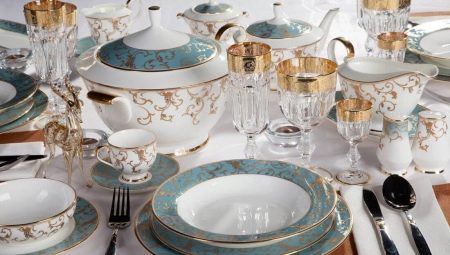It is difficult to imagine the life of a modern person without utensils. What does this concept include and what types of dishes exist? We will understand this difficult question in this article.
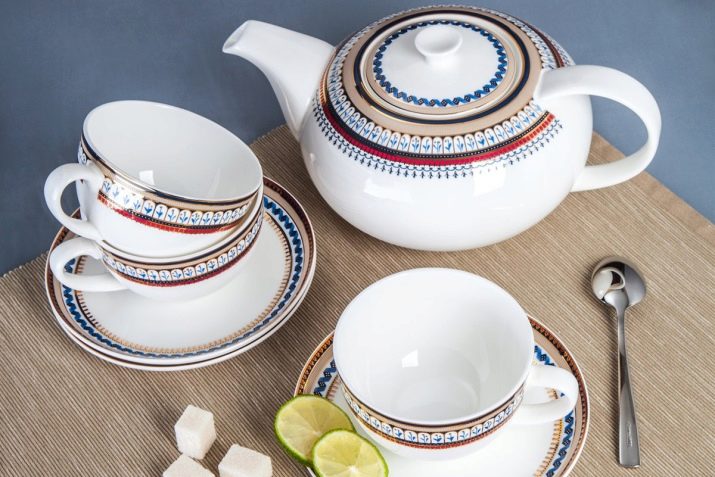
Features
Crockery is a wide group of items, including products for cooking, serving and eating, as well as food storage. Initially, almost all the dishes were made from burnt clay, but already from the 6th-7th centuries its metal analogues appeared, first cast iron, then copper. Much later, by the twentieth century, stainless steel products appeared, at the same time they first talked about non-stick coating.
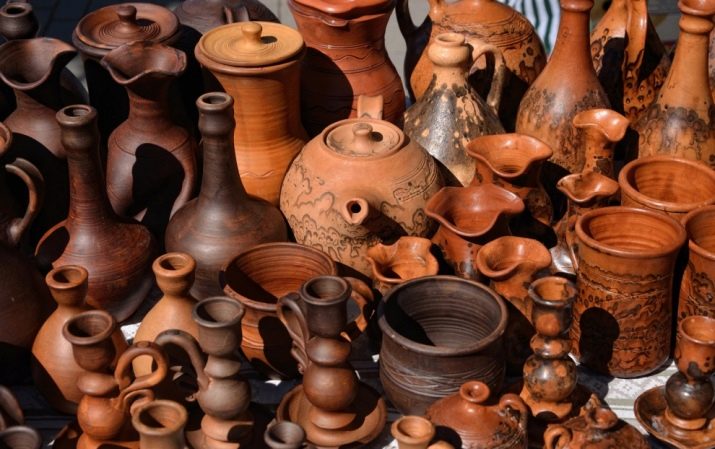
Materials
The first dishes were made of clay. A special fireclay was used, which withstands heating up to 1000 degrees. Today, there is also pottery, as well as ceramic counterparts. It is intended for cooking in the oven (various pots, baking dishes).
However, there are also ceramic pots however they must have reinforced metal bottom. Only in this case can it be cooked on the stove.
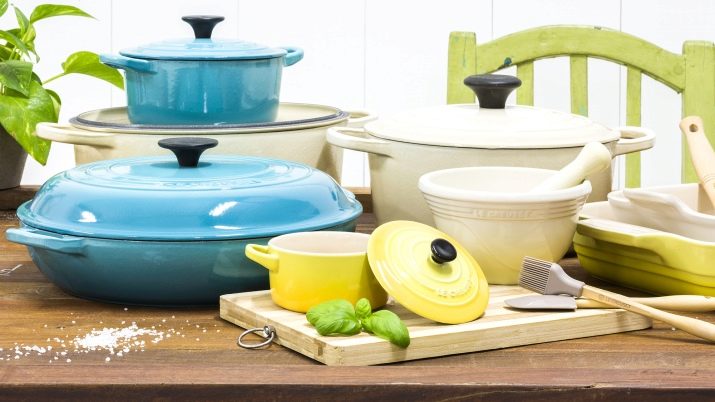
The following is a list of the most popular types of materials for making kitchen utensils.
Cast iron
Such dishes are characterized by a thick bottom and walls, which ensures uniform heating of the surface and long-term retention of heat. In addition, this material has natural non-stick coating, easy to clean, durable. Of the shortcomings - high cost and considerable weight.
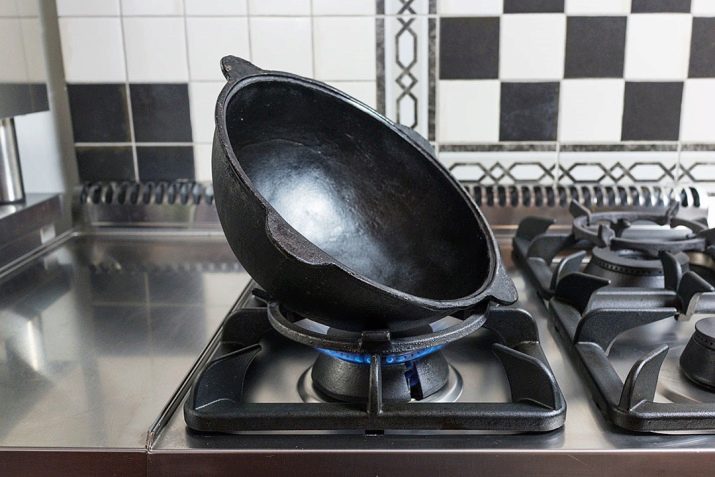
Aluminum
Aluminum cookware is lighter than cast iron, but it also conducts well and retains heat. The food in it is not oxidized, and therefore the enamel coating is optional. Non-stick coating helps protect food from burning.Aluminum utensils are stamped and cast, it is better to give preference to the second as more reliable.
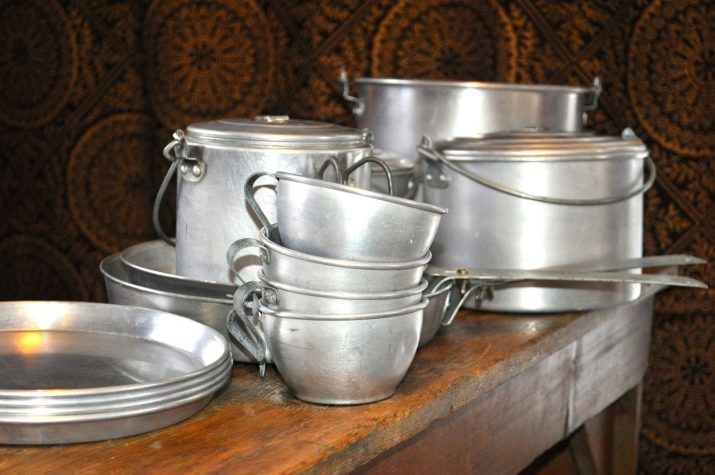
Steel
Steel utensils are also characterized by durability, but they must be coated with enamel. If cracks or chips appear on it, the dishes should be replaced with new ones.
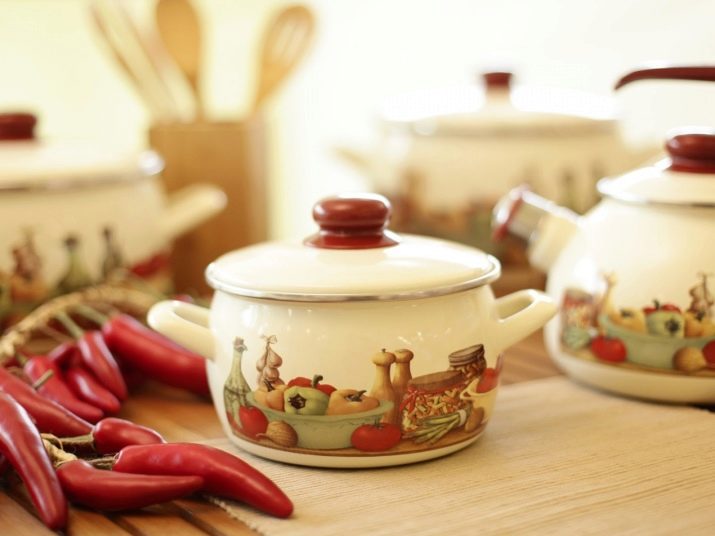
Stainless steel
Stainless steel is a durable inert material that is resistant to high temperatures, acids. He is almost not afraid of mechanical stress, scratches and chips do not appear on the surface.
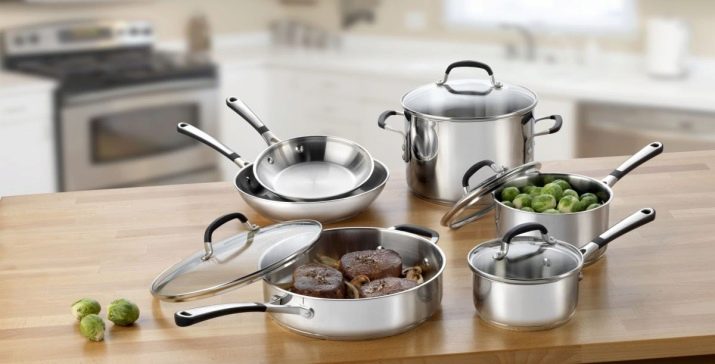
Copper
Expensive, usually exclusive, utensils are made from copper. The material heats up quickly and cools down just as quickly; this is not suitable for all dishes. Usually copper is used to make dishes for open fire, as well as coffee Turks.
Metal utensils usually have protective non-stick coating. The most common option is Teflon. The advantage of such a coating is the possibility of applying it to dishes of any configuration, high non-stick properties, and affordability. However, Teflon should not be heated above 200-240 degrees (usually the manufacturer indicates the exact highest heating point for a specific model of his product).
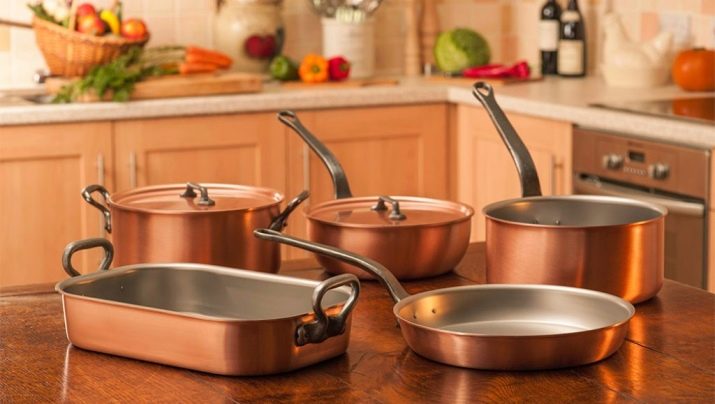
Despite the promises made, cook without oil in such a pan will not work. On the surface, scratches can appear quite quickly, in which case the use of utensils should be stopped. The material is also afraid of temperature changes, it is not recommended to wash it in a "dishwasher".
Eco-friendly and reliable coating is ceramic. It withstands heating up to 400 degrees, this utensil is more durable than analogues with Teflon protection. There are pans with ceramic coating applied by spraying and rolling. The first method involves spraying a ceramic layer onto a finished coating. The knurling method is the rolling of ceramics onto metal sheets, which are then turned into pans and other utensils. Ceramic-coated cookware is more expensive, but it will last longer.
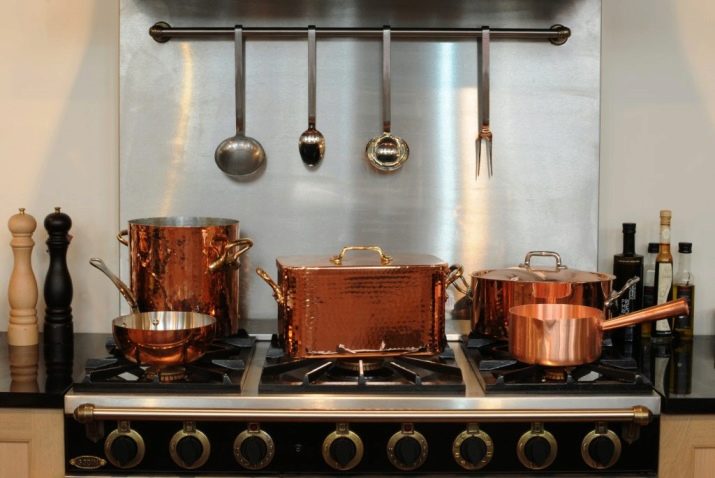
Stone coating is one of the most durable. To obtain it, the polymer composition is combined with granite or marble chips. The resulting mixture is treated with the inner and outer sides of the pan. Manufacturers position such a coating as heavy-duty, but this figure depends on the thickness of the protective layer. Optimally, if the bottom thickness of the utensil is 4-6 cm, and the stone layer is applied in 4-5 layers.
Such a pan heats up quickly and evenly. Meat and fish, as well as other products containing fat, can be fried without oil. If you choose a high-quality model, then it will definitely last longer than analogues with ceramic or Teflon non-stick layers. However, utensils with stone protection are more expensive. She is afraid of sudden temperature changes, not all models can be washed in a dishwasher.
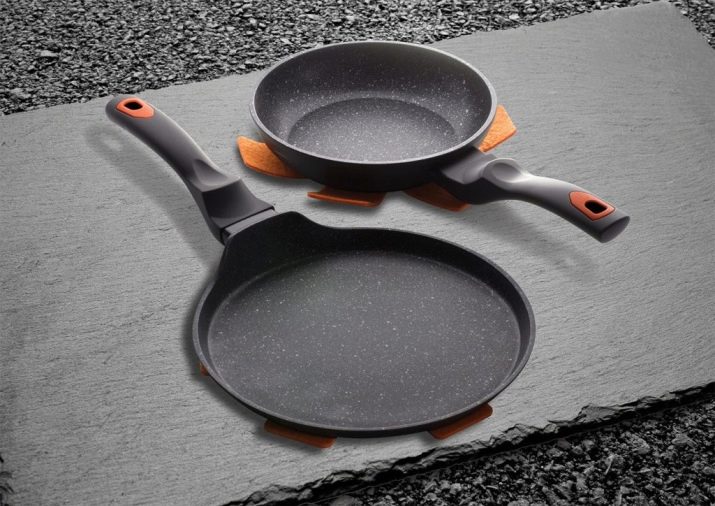
The most durable and durable (service life - up to 20-25 years) is titanium coating. Despite the fact that the content of this element in the protection layer is minimal, this is sufficient to provide improved technical characteristics of the dishes. The titanium coating is resistant to fading, scratches, mechanical damage. The material does not oxidize, does not change the taste of the products.
Not always and not all kitchen utensils have a protective non-stick coating. This may not have aluminum (the dishes will be very moody) and cast-iron models. Cast iron has a natural protective layer, but for its appearance it is necessary to calcine utensils with oil over low heat.
Cast iron and steel pans are usually enameled. It protects products from oxidation, extends the life of pots. In enameled dishes it is convenient to cook soups, cook and stew vegetables, meat. But to boil milk (and products based on it), pasta in such a bowl is not recommended. The contents will stick to the dishes, burn.
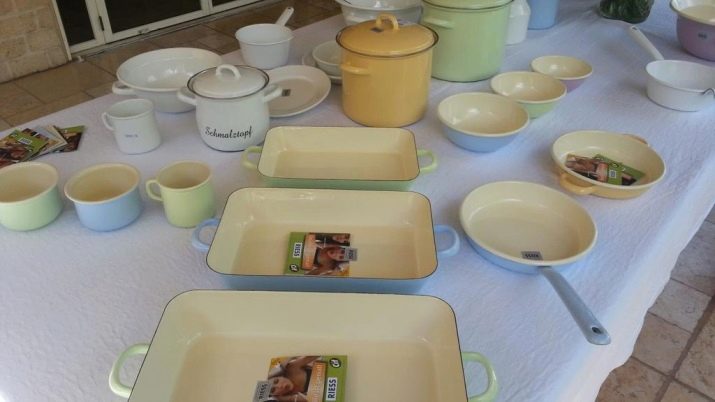
A modern version of kitchenware is utensils made of heat-resistant glass and silicone. Glass models are suitable for ovens, microwave. They look attractive enough, but rather capricious in leaving and more fragile, than metal analogs. Glass molds are in most cases not suitable for baking.
Silicone molds, on the contrary, are one of the best options for making pies, muffins, biscuits.
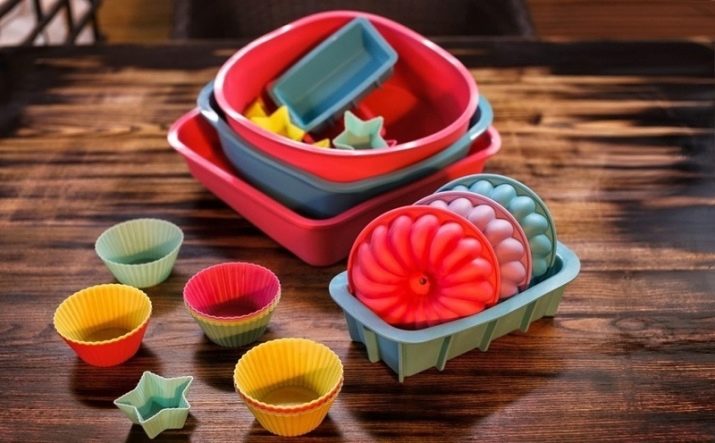
Ceramic forms and pots, as well as tableware, can quickly heat up and retain heat for a long time. Kitchen ceramics are usually covered with glaze, which extends the term of its operation, but if you want to cook dishes that are as authentic as possible in taste in pots, choose models of utensils without glaze. So, pores are preserved on the surface of the utensil, through which excess steam is removed.
Dishes for serving can be made of ceramics, faience, various types of food plastic, metals. Tea, coffee sets, tureens, salad bowls are usually made of porcelain, glass, faience, and ceramics.
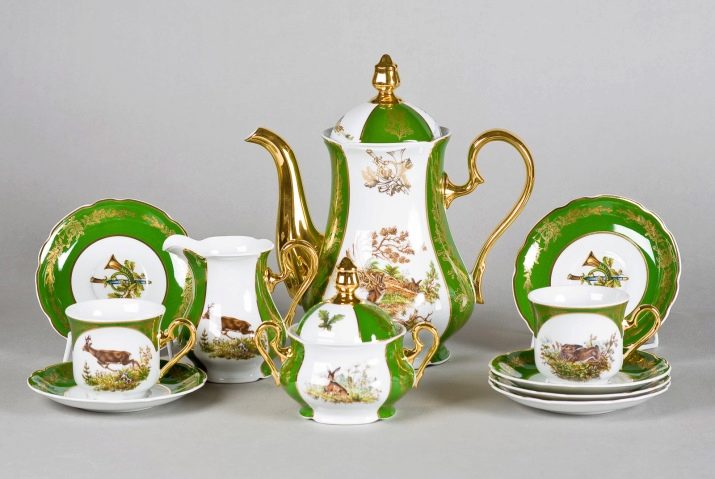
China
Porcelain dishes are grace, light weight, increased strength and a fairly high price. By the way, the most expensive is always thin-walled porcelain. It is also characterized by a smooth glossy surface. In some cases, the bottom of such dishes may have roughness, which is not a marriage. This is due to the fact that it was adjacent to the oven shelf during firing.
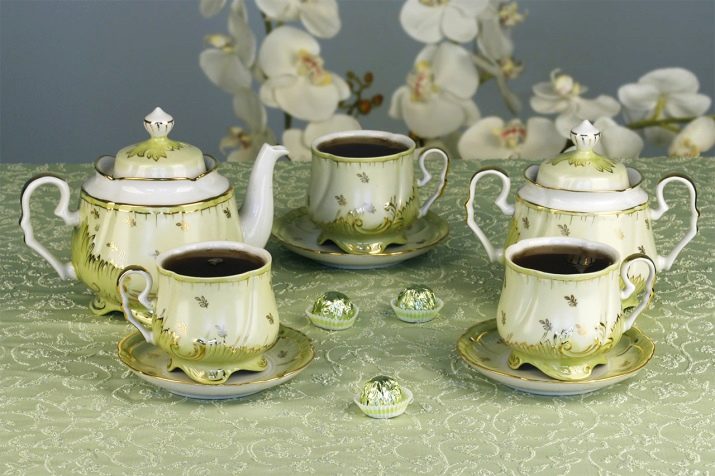
Faience
Such dishes are inferior to the porcelain counterpart in elegance. It is thicker and rougher, has a higher rate of moisture absorption. Glaze can be used to level this feature.
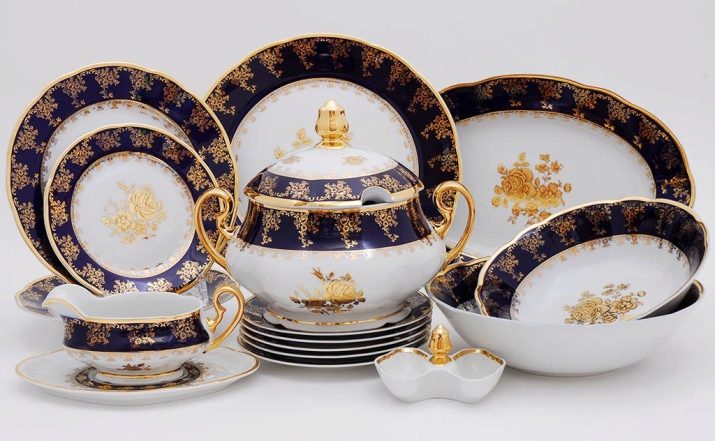
Glass
Very strong material, 6 times superior in strength to porcelain. Glassware is transparent and opaque, in most cases suitable for use in the microwave. The best option in terms of the balance between price and quality.
Glasses, glasses, dishes for alcoholic drinks are made of glass, which can be ordinary, crystal, heat-resistant. Of the new products, it is worth highlighting products made of double glass, which allows you to maintain the temperature of the drink and does not allow your hands to feel the heat or coolness of the drink.
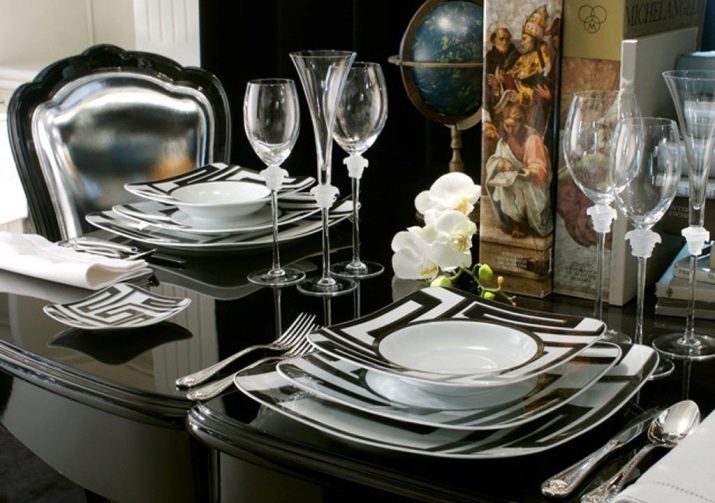
Plastic
Plastic dishes are disposable and reusable. The first is often used at picnics, it serves dishes in eateries, patties, fast food establishments. Such dishes should not be reused. Reusable analogs are usually multi-colored translucent plastic dishes that can be washed and used for hot dishes.
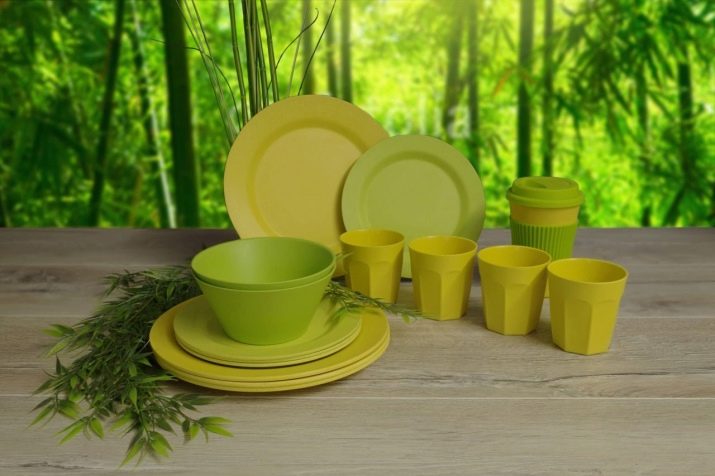
Wood
Wooden dishes today - it is rather a decorative element. Also on wooden boards, plates can be served meat, cheeses, bread and pastries. However, it is worth remembering the high hygroscopicity of the tree. It quickly absorbs fats, juices, odors.
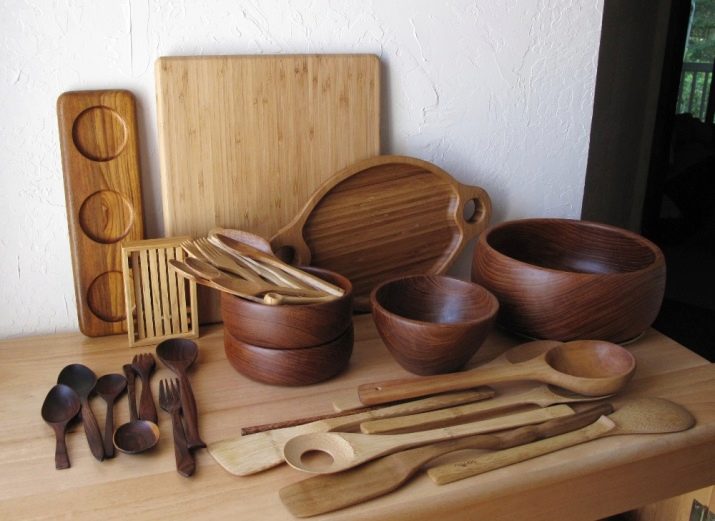
What kind of dishes do you have?
All the variety of dishes can be divided into groups. The basis of such a classification will be the scope of its use.
Traditionally emit kitchen utensils, or for cooking. First of all, this group includes pots, pans, teapots, baking dishes, as well as auxiliary cooking appliances - ladles, skimmers.
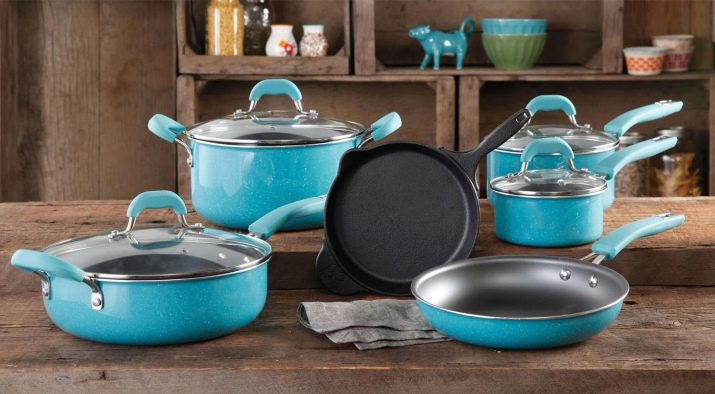
Ready food is laid out in dishes that are put on the table and from which food is eaten. These are the so-called serving devices - tureens, plates, salad bowls, glasses, cups, as well as cutlery - knives, forks, spoons. In a word - this is all the dishes that are used for table setting.
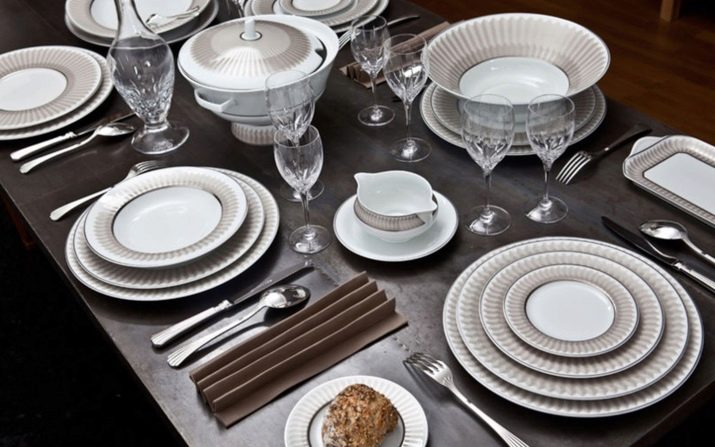
For storage of food special dishes are used. These are all kinds of cans, containers, nipples, containers for sauces and vegetable oil. This group includes all products that are suitable for storing raw or cooked food.
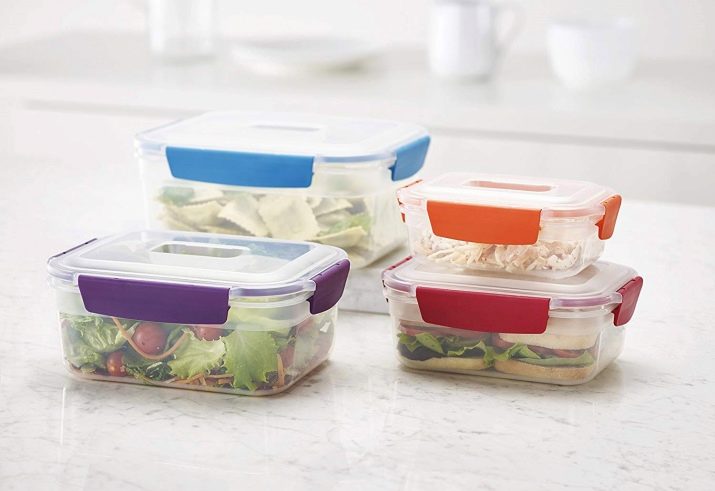
In addition, auxiliary dishes are sometimes isolated, referring to it champagne buckets, napkin holders, sets for spices.
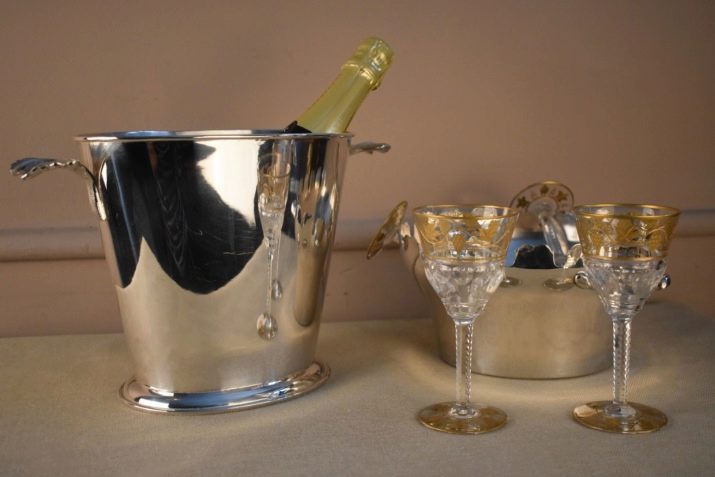
Consider in more detail each of the varieties.
For cooking food
From the name it is clear that this group includes utensils in which food is prepared. As a rule, it is made of metal, characterized by strength and durability. Kitchen utensils can have various capacities - from the volume for two to multi-liter items for a large company.
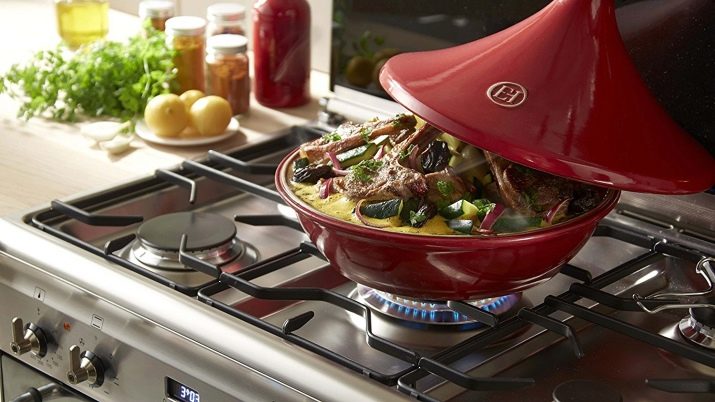
All the variety of kitchen utensils can again be divided into subgroups depending on its appearance and functionality.
Frying pans
Utensils intended for frying on the stove and baking food in the oven. It is a metal heat-resistant dishes usually round or square in shape with small sides. For convenience, pans are equipped with lids, handles.
A pan for every day can be called universal. It is large enough, with a round bottom and walls of medium height (there are straight or slightly sloping). Must have a non-stick coating. Teflon is the most popular among the latter, but it is also the most moody. The maximum heating temperature of the Teflon coating is 200-220 degrees. There is also a ceramic coating - more resistant, withstands heating up to 400 degrees.
The most durable is considered titanium non-stick coating although the cost of such a pan will be high.
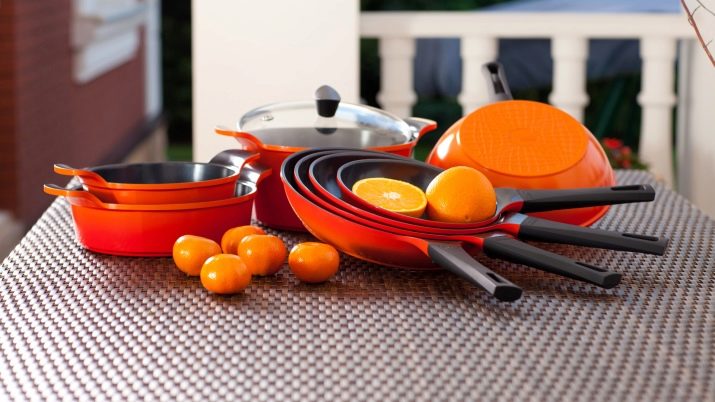
For stewing meat and vegetables, baking them in the oven is suitable brazier. It is a deep pan with two handles and a metal lid. It has thick walls and a bottom, and therefore is optimal for cooking cabbage rolls, meatballs, stuffed peppers.
Frying pan wok It is intended for cooking Asian dishes - primarily noodles with vegetables. This pan is easily recognizable by the convex bottom and thick walls. Due to the design features of the pan, maximum heating occurs in its lower part, which is why it is important to use special thin noodles in it, and chop the vegetables finely. In addition, the dishes must be mixed all the time.
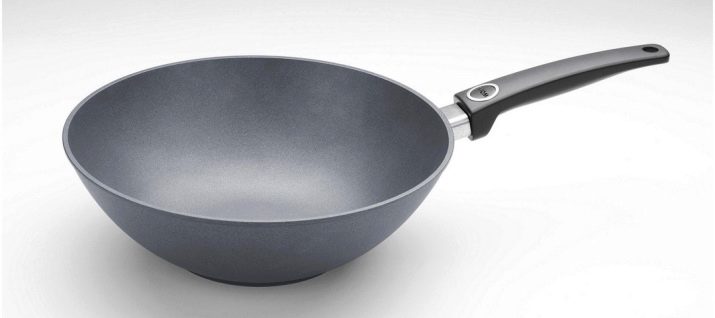
For those who want to fry without oil and prefer healthy food, we can recommend grill pan. It is easy to recognize by its ribbed bottom. Thanks to this form, hot air rises from the pan and food is cooked without the use of oil. Besides, fat escaping from food flows down the ribbed structure to the bottom of the pan, which means that food no longer comes into contact with either. The grilled dish also looks very attractive - it has fried strips.
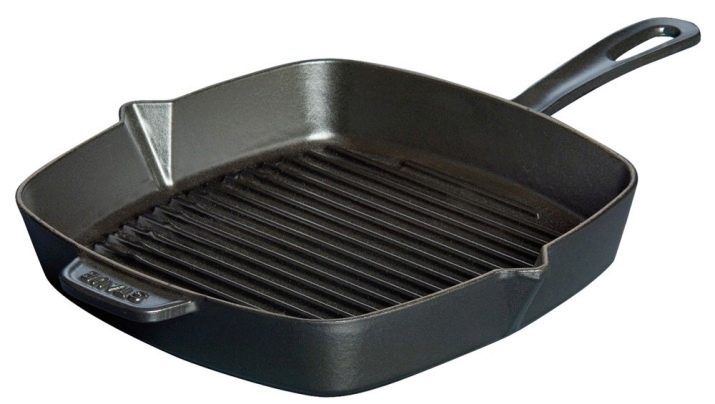
If you often cook chicken tobacco or other dishes that require a press, then it makes sense to purchase a special pan. It's massive thick-walled utensils with a press, by which food is pressed to the bottom of the pan.
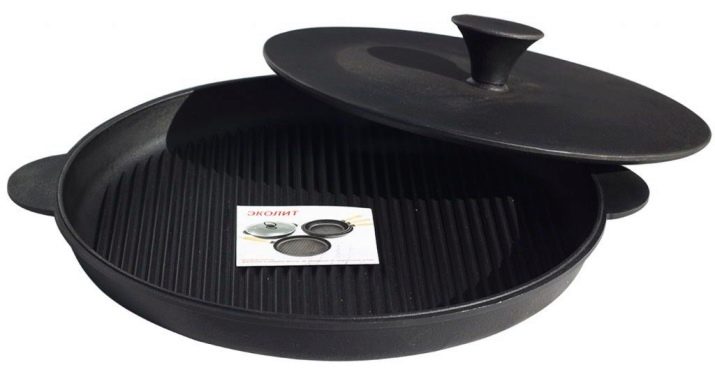
Pan with different branches convenient for frying several products at once. The important point is the more cooking zones, the smaller the servings.
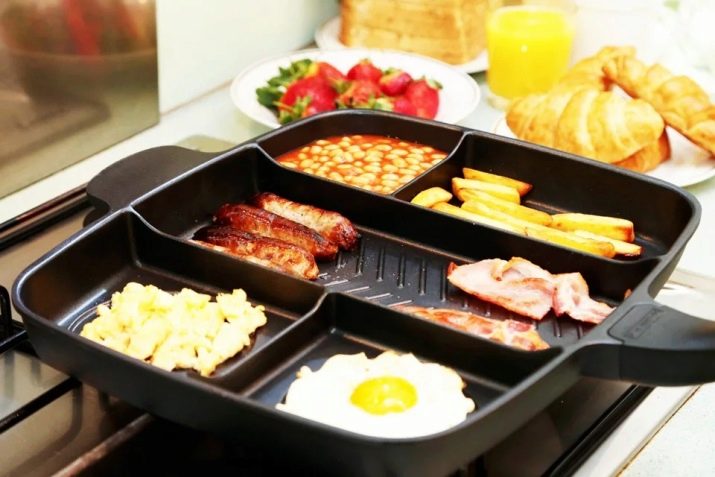
Waffle iron - Another type of pan with a special corrugation, thanks to which Viennese waffles and similar desserts are obtained.
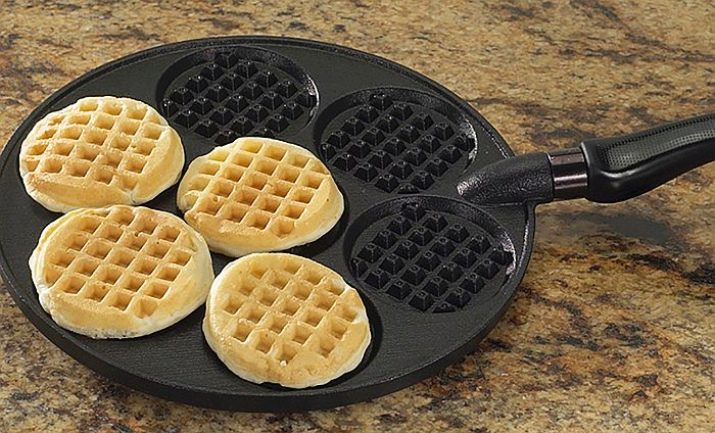
A traditional pan is used to prepare traditional Italian paella dishes. it round thick-walled utensils with a thickened bottom, low sides and handles on both sides.
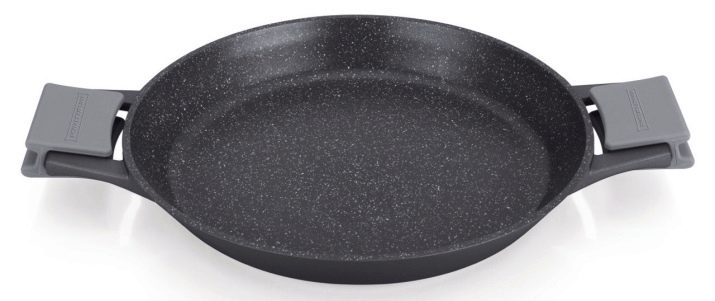
For pancakes, it is better to purchase a separate pancake pan. This is a round utensil with low sides and a thin bottom.
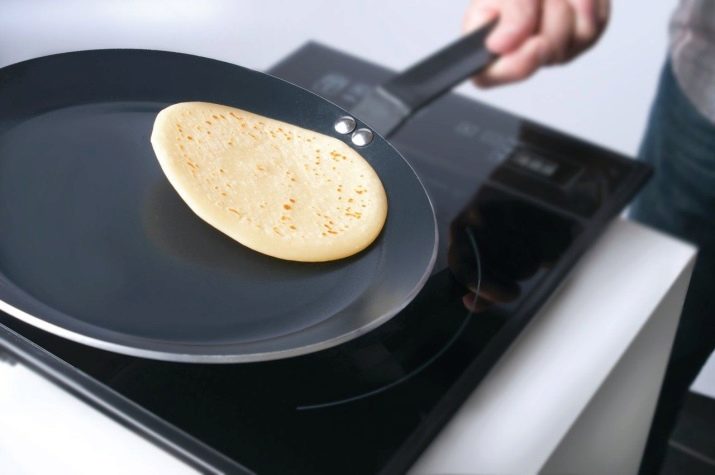
Baking sheets
Metal sheets with small sides used for baking dishes in the oven.
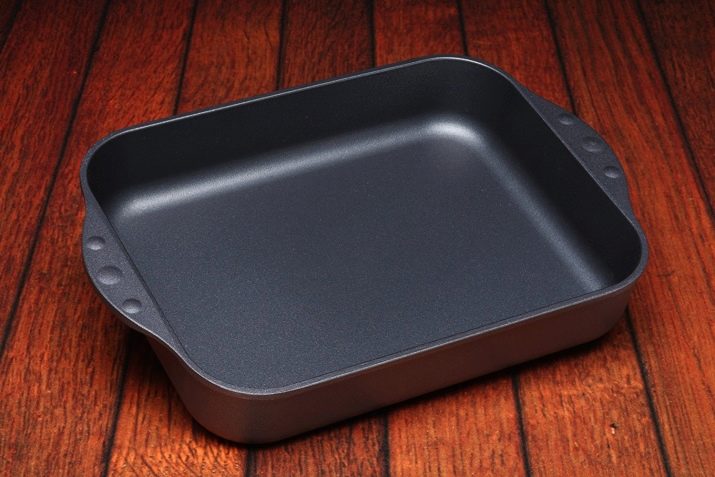
Bakeware
Assistants to bake pies, bread, make cakes. Characterized by a variety of shapes and sizes, set the test to the desired configuration.
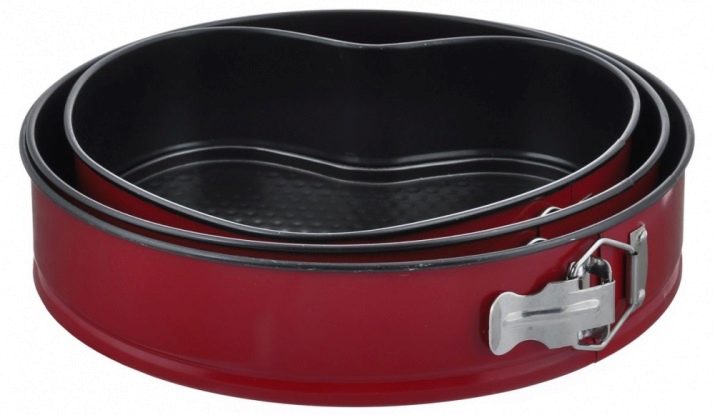
Pans
Deep utensils intended for cooking soups, vegetables, some main dishes. The main requirements for pots - heat resistance, high enough walls. Pots differ in many criteria - material, bottom diameter and wall height, capacity.
Small pots with a capacity of 1-3 liters are suitable for preparing small portions.They are suitable for boiling eggs, cereals, boiling milk.
The volume of 3-5 liters is optimal for pots of family people. In such dishes, you can cook borscht for all households, meat, boil dumplings or spaghetti.
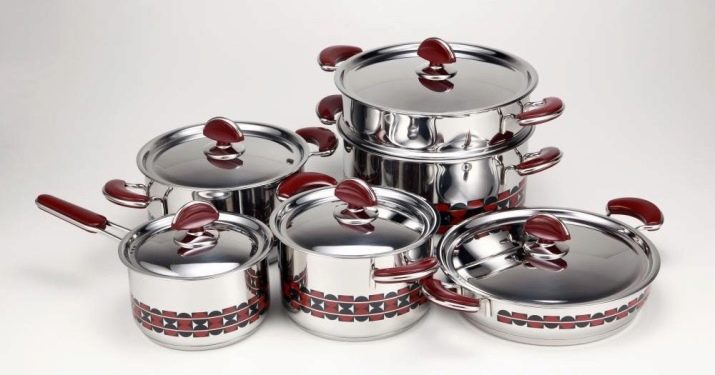
Pots with a volume of 5 liters or more will be needed for a very large family, as well as for making stewed fruit, pickling cabbage, and preparing preparations for the winter.
“Transitional” utensils between the pan and the pan can be called a stewpan. This low pan or pan with high walls and a thick bottom is suitable for stewing vegetables and making mashed soups.
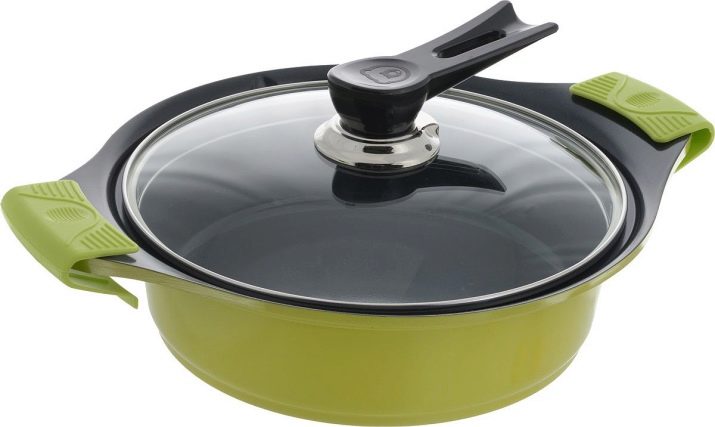
Cauldrons and bowlers intended for cooking oriental dishes - pilaf, stewed vegetables, meat dishes. Please note that for cooking on the stove this type of utensil should have a flat bottom, analogues with a convex bottom - exclusively for cooking on an open fire.
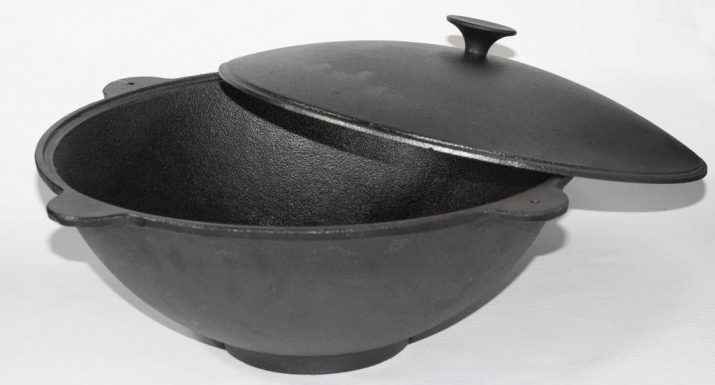
If you make porridge often, consider buying double bottom pots. Water is poured into the space between the bottoms, which, when heated, promotes the digestion of cereals. As a result, porridge does not burn, it tastes like the one cooked in a Russian oven.
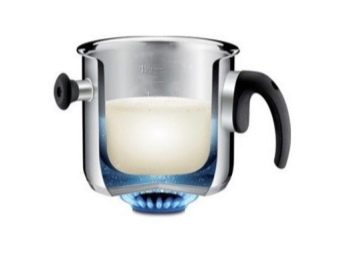
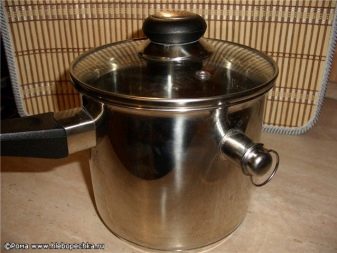
Steamers and pressure vessels are designed for cooking steamed and are a double pan with a grid or tiers. Water is poured down, and food is laid out on the tiers. The latter is prepared under the influence of steam.
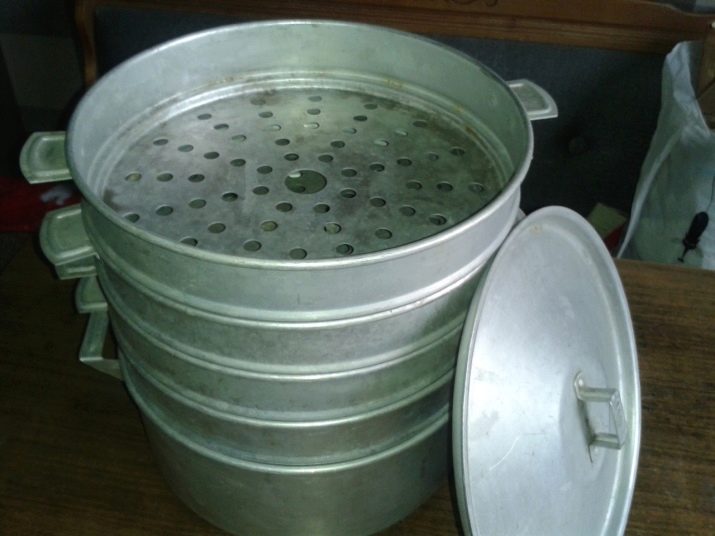
Buckets - small pots for boiling water or other liquids. Sometimes used for cooking eggs, vegetables, cereals.
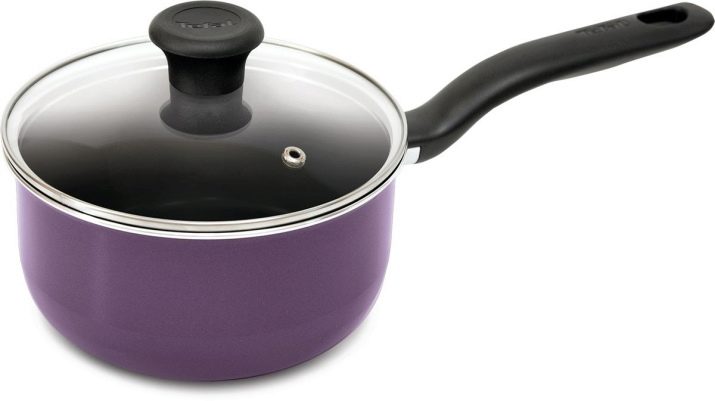
Pots for baking, cocotte - dishes that allow you to cook second courses, vegetables, julienne in the oven. Usually the same dishes “wander” into the category of serving, since the dish in it is also served on the table.
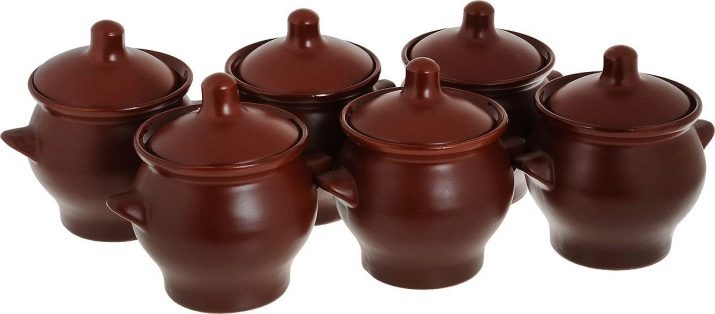
Kitchen utensils also include colander (bucket with perforations at the bottom), various ladles, spatulas, mortars, graters and grinders, bowls, cutting boards.
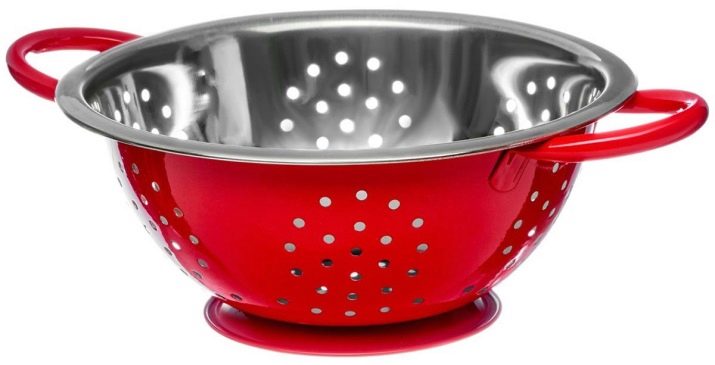
For serving
Table setting usually begins with the arrangement of plates. Dinner plate It can be intended for the first (deeper) and second (flatter) dishes. Snack plates serve both hot and cold appetizers. The diameter of the snack plate may be 20-30 cm.
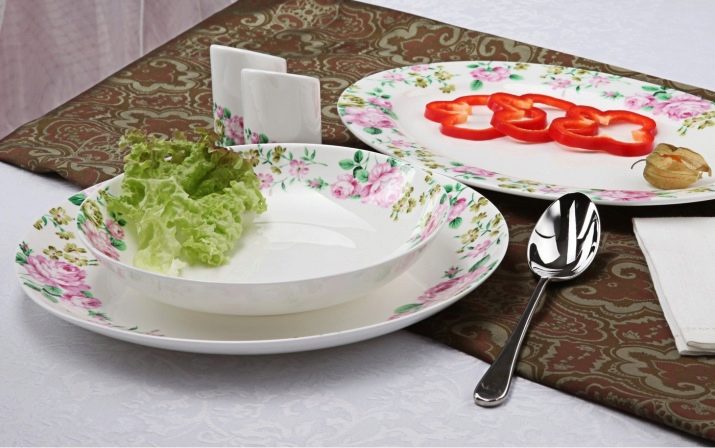
Served with pies, croutons, bread patty platesand for desserts a dessert option is provided with a diameter of 20 cm. You can also put fruits in them.
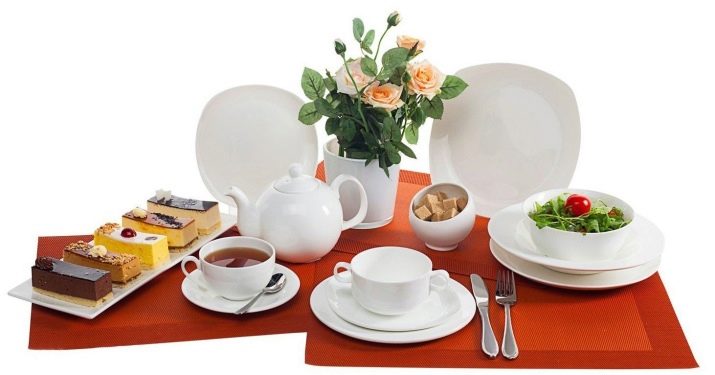
The fish plate can be recognized by its elongated shape. In Soviet times, they were also called herrings. Small flat dishes for caviar. And the deeper, in the form of a shell, is intended for oysters, seafood, as well as salads from them.
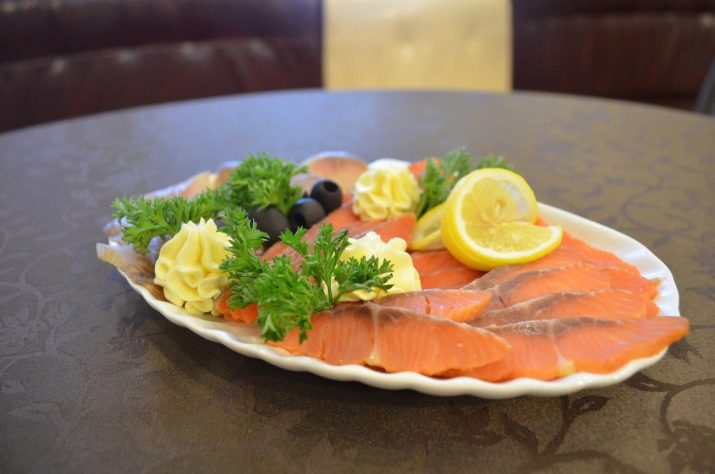
A plate similar to the dining room under the second, but with sides, served under the eggs and fried eggs, omelets. Under the scallops mean plates having a separator. They can serve dishes immediately with sauces.
Salads are served in deep plates, usually their volume is 120 ml. In them, you can put pickles, marinades.
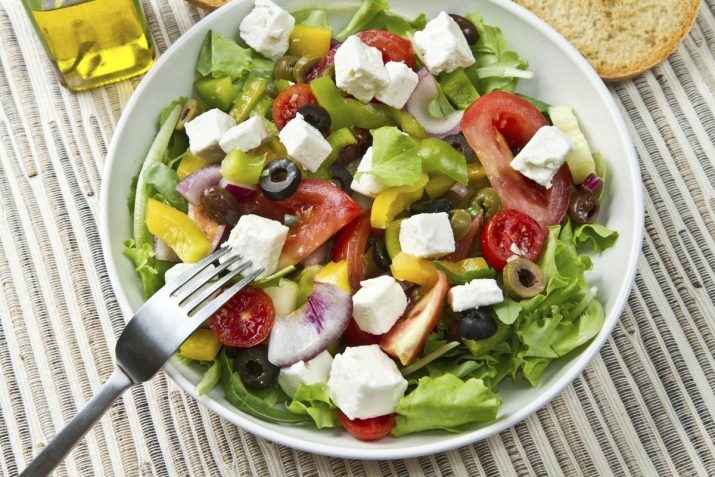
Small (up to 10 cm in diameter) deep plates are called sockets, but they are intended for jam and jams. For jelly, berries and fruits served creamers. They have a slightly smaller diameter than sockets, and a deeper bowl.
Often a gingerbread man has a short thick “leg”.
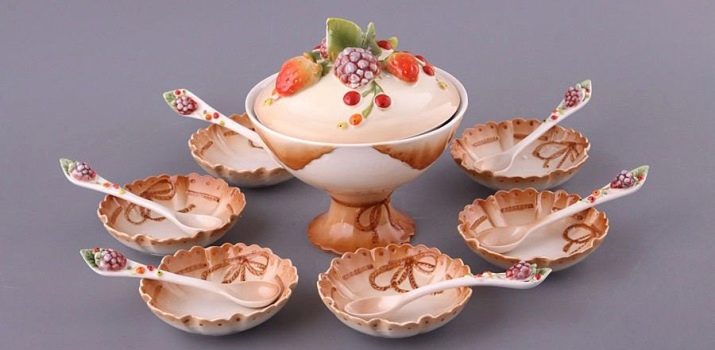
For drinks use cups - tea, coffee. The standard volume of a tea cup is 250 ml. They are served complete with a saucer. Coffee cups look like tea cups, but their volume is usually 150 ml. Even smaller cups (75 ml) are provided for strong coffee. Larger (200-250 ml) - for cappuccino.
An analog of a tea cup is a mug, however, it exceeds the tea volume. They are used in everyday life for tea and coffee, but are not served to the table as serving dishes. For broths, it is customary to serve bouillon dishes - this is a deep bowl-shaped dish with two handles. A bowl is an eastern analogue of cups, but without handles, spherical in shape.
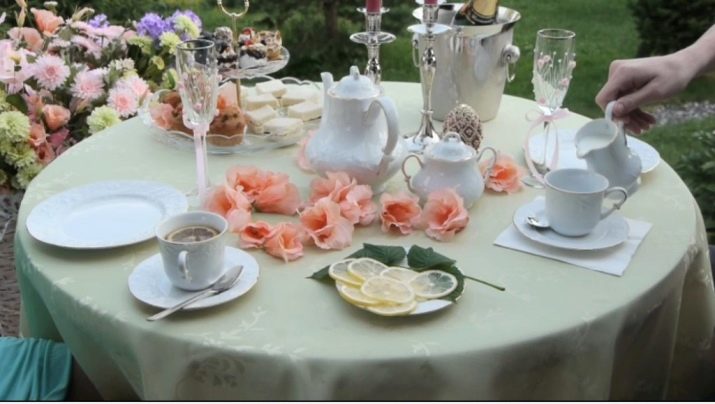
Alcoholic drinks are served in glasses, glasses, wine glasses. Almost every drink and even its subspecies has its own utensils for serving (for example, wine glasses for white and red wine, according to modern etiquette, should be different). Juices, compotes, water are usually poured into glasses. They can be high and low, with walls expanding upward.
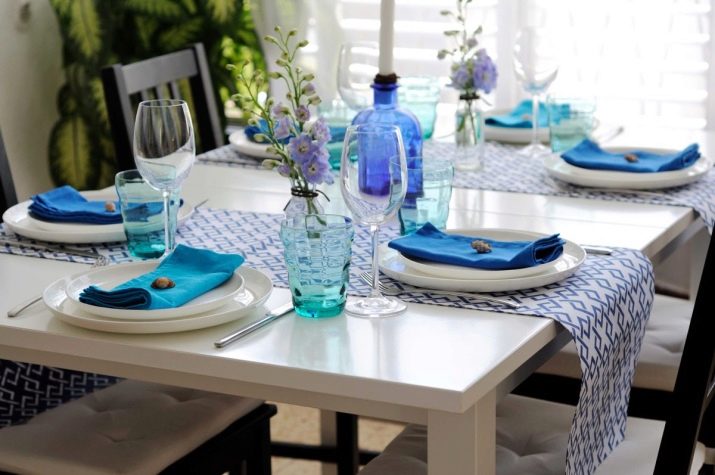
Table setting involves using cutlery. They are divided into main (intended for individual use) and auxiliary (used to shift part of the dish from a common plate to an individual one).
The minimum set of cutlery is a spoon, fork, knife, as well as a teaspoon or dessert spoon. However, it should be taken into account which dishes will be served at the table, since there is a fish fork and knife (tongs), salad and snack fork, dessert fork and knife, buffet, fruit, and seafood devices.
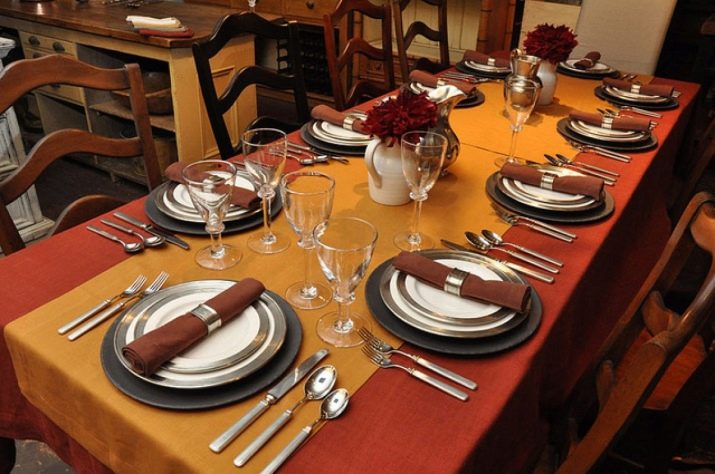
For serving, you will also need a kettle and a coffee pot, a jug with a lid, a sugar bowl, and sauceboats.
For food storage
Storage utensils are primarily diverse containers. Today they are made mainly of food-grade plastic, silicone. Glass analogues are also suitable, however, you cannot store food in a glass container in the refrigerator, and then heat the contents in the microwave in it. Due to the temperature difference, the glass will crack.
Small enameled pots can also be called storage utensils. Thanks to the enamel layer, oxidation processes do not occur in them, however, this is true only if the enamel is preserved.
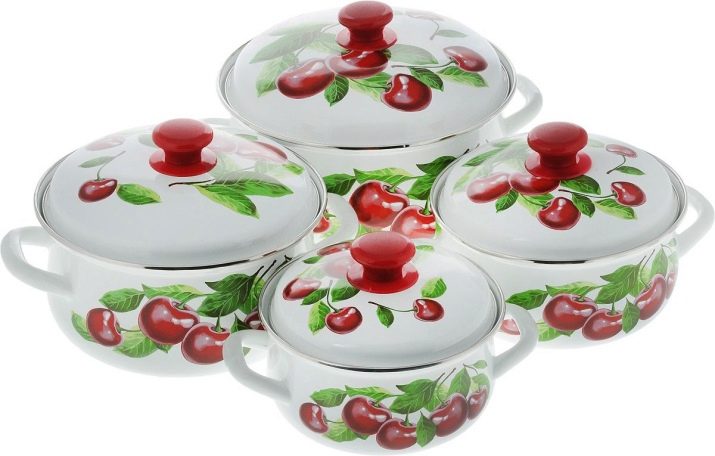
Variety of shapes
Today, few people will be surprised by dishes of unusual shapes. As for pans and pans, this is usually round dishes. Frying pans and baking dishes can also be square.
Among the plates are also popular circle and square shapes. In addition, on sale you can find utensils for serving in the form of leaves, flowers, complex geometric shapes. When buying such products, you should remember that they can cause storage difficulties, taking up a lot of space.
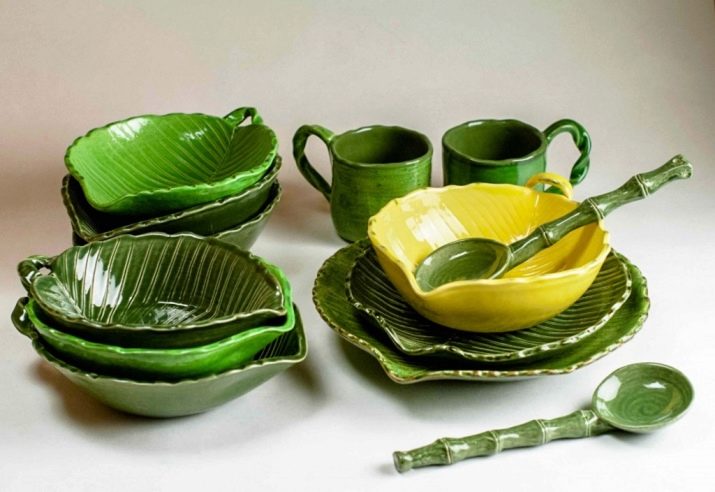
Styles
There is utensils for a certain celebration. Most often, you can find sets in the New Year or Christmas style. Children's dishes are also always thematic - the images on it are dedicated to the hero of cartoons and fairy tales; themed children's birthday sets can also be found on sale.
Classical or Romanesque dishes are usually massive ceramics, simple geometric shapes, pure plain colors (white, beige, ivory).
Empire or Art Nouveau dishes are often artsy porcelain, complex shapes and an unusual print. This style is also characterized by glassware with mosaics.
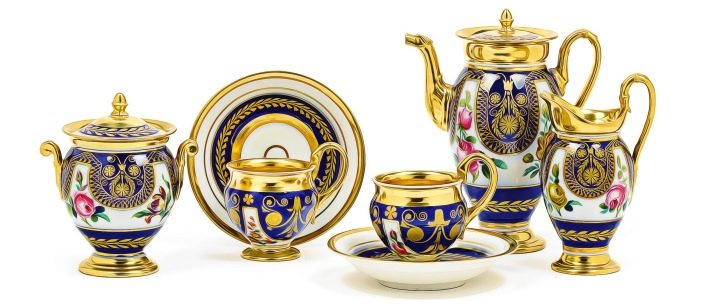
Gothic sets - This is unusual, but at the same time quite simple in form dishes, a combination of wood, metal. A sign of high-tech will be glass, plastic.
For products Japanese style apply ceramics, porcelain, clay. Items look original, demonstrate the historical features of the country, stylized as old national dishes.
But chinese dishes, unlike the Japanese, is characterized by a large number of ornaments, patterns. The forms are more elegant, and the dishes themselves are more elegant.
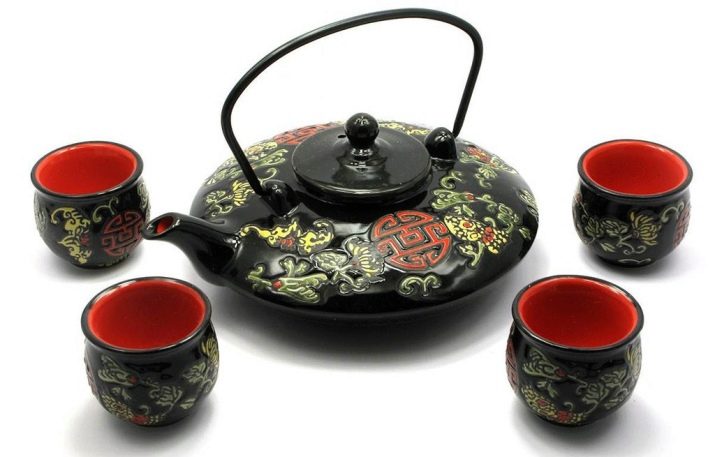
Country style - it is wood, ceramics, clay. Mandatory element - picturesque ornaments with floral and floral motif. The dishes in the Spanish style are translucent, bright, and often combines several contrasting colors within the same set. In the Scandinavian cuisine, wooden and ceramic dishes of white and purple colors reign. Stylish simplicity and conciseness of forms - these are the features of this style.
French style - These are transparent and translucent objects, vases and wine glasses made of frosted porcelain, color restraint.
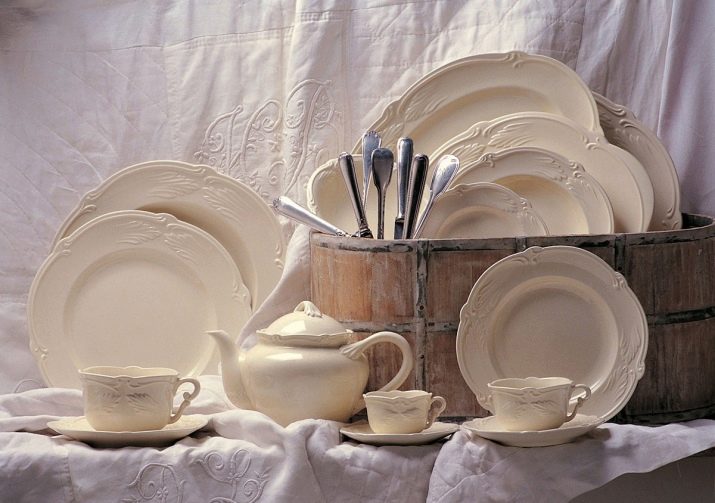
The necessary minimum hostess
In the kitchen, it is advisable to have 3 pots. Volume - 5-7 liters (for cooking soups and stewed fruit), 3-5 liters (for the second, side dishes) and 1-2 liters (warm food, cook porridge).However, for cereals and sauces it is recommended to get a stewpan.
If there is not much space in the kitchen, then choose a set of pots. They are conveniently stored by placing them in each other. If you buy utensils separately, such a "nesting doll" may not work out.
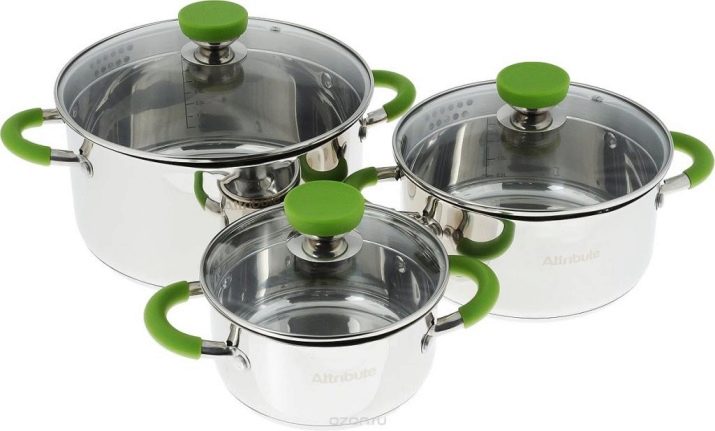
Frying pan at least 2 - more (for meat, stewed vegetables, side dishes) and less (for morning scrambled eggs or scrambled eggs). It is convenient if a large pan can be used both on the stove and in the oven. However, for the oven it is recommended to get at least one baking dish.
The number of cutlery, glasses, cups and plates - deep and under the second, is usually calculated by the number of households. On average, this figure is multiplied by 2-3. A small family will need 2-3 ladles, the same number of slotted wheels, spatulas.
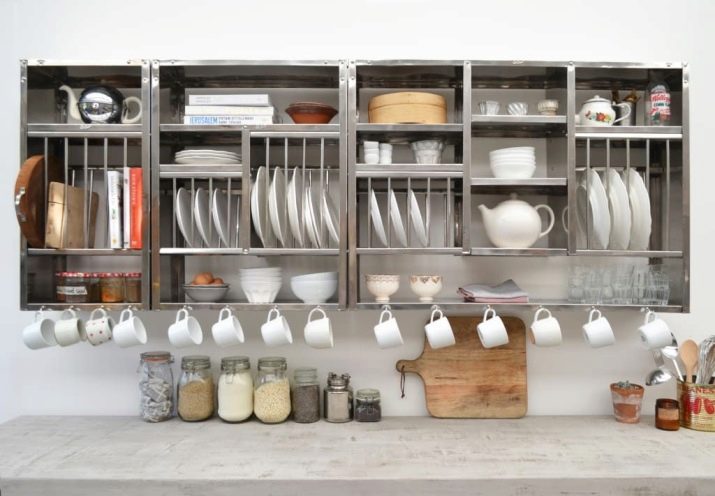
How to choose?
When choosing dishes for the home, it is important to consider its purpose. When choosing pans, you should pay attention to the thickness of the bottom and wall. The optimal bottom thickness is 4-6 mm, the walls are 2-4 mm. Thin dishes are quickly deformed, dishes on it will burn. The thicker bottom and wall will take too long to warm, which may affect the taste of the finished dish.
When choosing a grill pan, you should give preference square item, especially if you plan to fry steaks of meat or fish, entrecotes on it. The square shape will be more spacious - at one time you can fry 4 servings at once.
However, if you have gas burners, it is better to give preference to a familiar round pan, a square analog in this case will not get uniform heating.
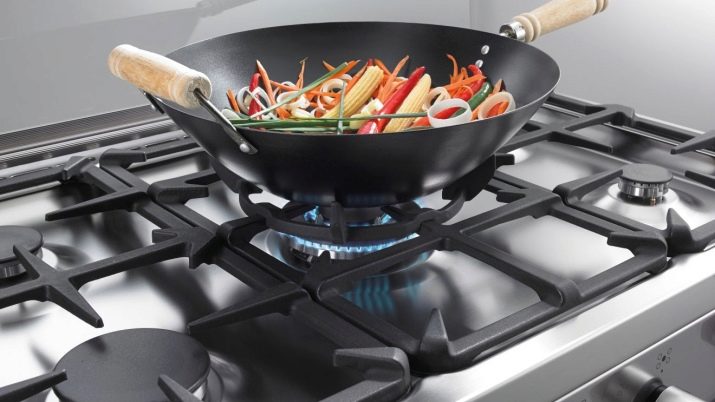
Another criterion for choosing kitchen utensils is their conformity to the type of stove. The most demanding regarding the choice of cookware is an induction cooker. The utensil must have a ferromagnetic bottom, otherwise it will not heat up. The bottom of the dishes should be thick (for pans it is at least 5 cm), in diameter at least 12 cm. Otherwise, the magnetic coil will not be activated. It is important that the bottom of the utensil be smooth, otherwise you will not get uniform heating.
Glass-ceramic plates require utensils with a completely flat and smooth bottom. As a rule, well-known brands treat the bottom of such utensils with a special dark composition that improves the thermal conductivity of the product and reduces the risk of scratches.
Most types of utensils are suitable for gas stoves, but it is better to choose the one with a groove at the bottom. Thanks to it, heat evenly disperses from the center to the periphery of the bottom of the dishes.
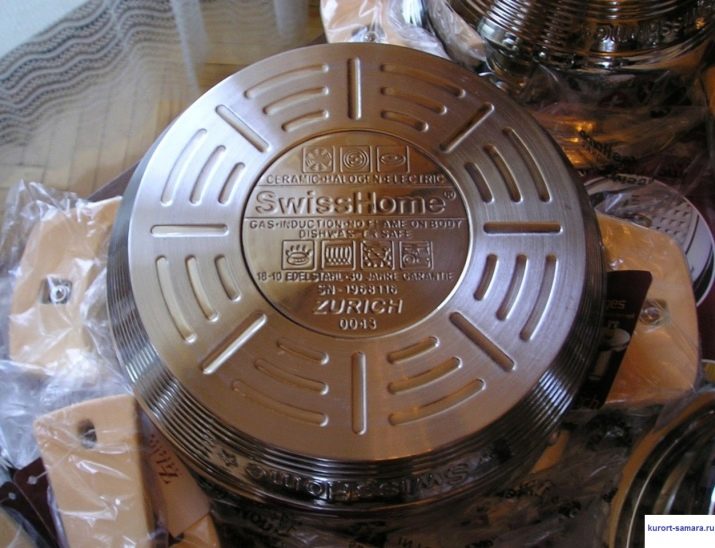
Any kitchen utensils, regardless of the type of stove, if possible must have the same bottom diameter as the hotplate. The wider the pan (provided that its diameter matches the size of the burner), the more convenient it is to mix the food. However, a high saucepan is also very useful in some cases, for example, when cooking spaghetti.
It is more convenient to purchase kitchen utensils with a lid. It can be from the same material as the utensil itself, or from heat-resistant glass. The latter are convenient in that they allow you to observe the process.
An important point - the lid should fit snugly into the pan or pan. Ideally, if it has a perforation for steam output and a heat-resistant comfortable handle.
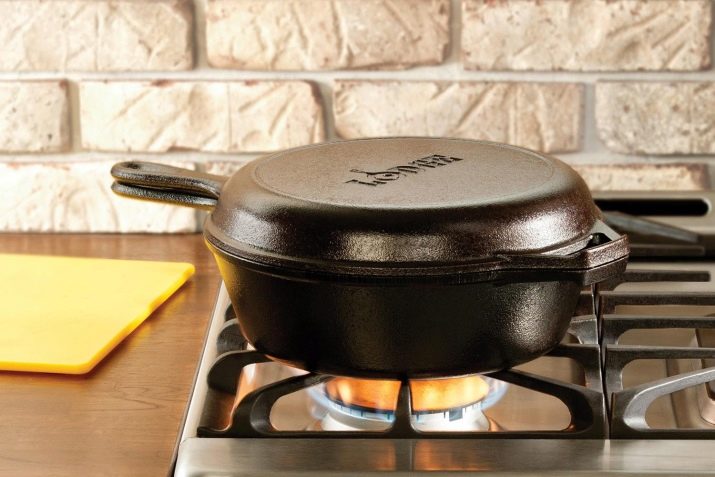
About what dishes are and how to care for them, see below.
